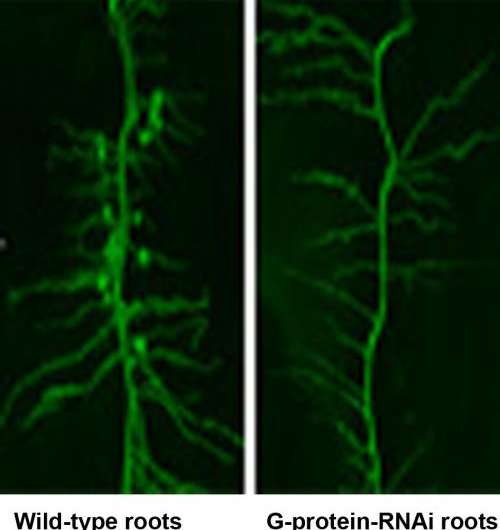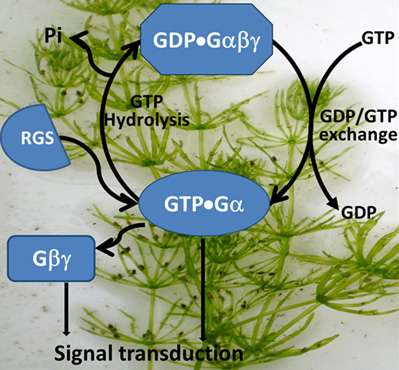Research unveils clues about protein mechanism critical to plant growth and yield

Scientists at the Donald Danforth Plant Science Center have made several scientific discoveries demonstrating the significant roles Heterotrimeric G proteins play in plant development and yield. Sona Pandey, Ph.D., principal investigator at the Danforth Plant Science Center and her collaborators have published several papers on their research in recent months.
Pandey and collaborators showed that "G proteins" occur in a wide range of land plants and algae. This discovery was published in the October 2013 issue of Plant Physiology.
"G proteins, alpha, beta and gamma are important because they play critical roles in plants' development, including fruit and seed size and production, defense against pests and pathogens and response to abiotic stresses such as drought and ozone," Pandey said. "Understanding their function at the very basic level is an important step in the process of developing products that can be applied to improve crop yield and address environmental issues related to production agriculture."
Pandey's research also revealed that when G proteins quantities were elevated in Camelina sativa, the plant produced more seeds, which were also bigger in size. Camelina seeds have very high oil content, leading researchers at the Danforth Center to focus on Camelina to develop biodiesel and other industrial products. Discoveries about the impact of G proteins on seed production and size were published in the September 2013 issue of Plant Biotechnology Journal.

The Pandey lab also showed that G proteins function in soybean roots to affect formation of nitrogen-fixing nodules through a symbiotic relationship with certain beneficial bacteria. These nodules allow soybean to access nitrogen from the atmosphere. The discovery, which could lead to improved crops that require less nitrogen-containing fertilizer, was published in Plant Physiology in May, 2013.
Ongoing research in the Pandey lab seeks to understand how G proteins work, and how biochemical reactions involving G proteins evolved in plants. "The research we've completed to date is just the tip of the iceburg," said Pandey. "We believe there is a lot more to learn and then apply to improve agricultural plant productivity."
Provided by Donald Danforth Plant Science Center

















